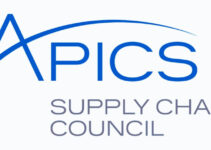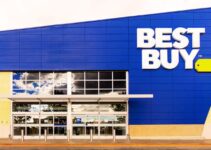LVMH (Louis Vuitton Moet Hennessy) is a luxury fashion goods manufacturing French multinational conglomerate. The merger of Moet Hennessy and Louis Vuitton laid the foundation of the conglomerate in 1987. Today, we’ll discuss the value chain analysis of LVMH supply chain analysis; primary and supporting activities in the process of value chain analysis Example Company. They are inbound and outbound logistics, operations, marketing, and customer service; infrastructure, HRM, technology, and procurement as an application of the value chain analysis process.
- Suppliers and Vendors of LVMH
- Chile LTDA LV
- Vietnam Company LV
- Branch of LV Vietnam Co
- LVVN
- Chi NHANH CONG TY TNHH GIONG THUY SAN Vietnam
- MALLETIER LV
- Singapore PTE LV
The Value chain analysis of LVMH supply chain analysis would analyze the primary and supporting activities in the process of value chain analysis. They’re inbound and outbound logistics, operations, marketing, and services; infrastructure, HRM, technology, and procurement. Here’s supply chain analysis of LVMH value chain analysis company example as follows;
Value Chain Analysis of LVMH
Let’s discuss the primary and supporting activities involved in the process of value chain analysis of LVMH supply chain analysis. It is an application of value chain analysis based on Porter’s model; some of the key elements and components of value chain analysis are as follows;
Primary Activities of LVMH
The primary activities are directly involved in the production of products and goods and adding value to the luxury fashion company. Some of the five main primary activities in the value chain analysis of LVMH supply chain analysis are as follows;
Inbound Logistics of LVMH
I-Large Suppliers Network
LVMH has established a very large supplier network comprising 789 suppliers and vendors in various countries across the world. The large and diverse suppliers’ network ensures the smooth supply of raw materials, components, and supplies for the production of retail fashion apparel and other productions.
II-Responsible Sourcing
According to an estimate, LVMH sources approximately 78% of the raw material responsibly and ethically. The retail luxury fashion brand plans to achieve 100% responsible sourcing by 2025. However, responsible sourcing means that suppliers are complying with strict environmental standards and recycled material. The concentration of various raw supplies and their responsible percentages are as follows;
- Leather 96%
- Wool 99%
- Feather and Down 100%
- Wood 93%
- Cotton 70%
- Polyester 44%
- Gold 93%
- Diamond 100%
III-Suppliers Code of Conduct
LVMH is highly careful about environmental sustainability and social responsibility. In order to regulate suppliers and ensure social and environmental responsibility, the luxury fashion brand has set up a strict code of conduct for suppliers. It comprises of following elements;
- Proper maintenance of the record
- Employees and workers could easily and openly share their feedback without any fear
- Fighting corruption
- Complying with LIFE 360 goals and objectives regulations
- Following the local and social laws
Outbound Logistics of LVMH
I-Transportation & Logistics
LVMH partners up and collaborates with various transporters and 3rd party logistics service providers. They transport and distribute raw materials from suppliers to manufacturers; finished fashion products to the distribution centers and logistics facilities, and then to the retail facilities in various countries worldwide.
II-Sustainable Logistics Partners
LVMH carefully selects those transporters and logistics service providers that comply with ISO14001 and Euro6 standards and regulations. The objective is to decrease the greenhouse gasses and carbon emission rate throughout the supply chain and logistics network. However, it allows the luxury retail fashion brand to reduce its carbon impact.
Operations of LVMH
I-Production & Manufacturing Factories
LVMH has roundabout 118 manufacturing factories for the production of retail luxury fashion products and goods. They produce high-quality luxury fashion products and goods in various categories to keep up with customer demands. However, they receive orders and stylish fashion designs from the creative team of designers and collaborate with them to develop the fashion products accordingly.
II-Warehouses and Distribution Centers
LVMH has established a very large network of warehouses, distribution centers, and logistics centers. They receive finished goods from various production and manufacturing facilities, temporarily store and organize the finished goods, and distribute them to various retail fashion outlets and stores across the world.
Marketing & Sales of LVMH
I-Creative Storytelling Marketing Campaign
LVMH focuses on launching creative storytelling marketing and advertisement campaigns for the promotion of its luxury fashion products and accessories to the end customers. Along with marketing campaigns, the fashion brand conducts art galleries, fashion shows, social events, and celebrating cultural events to connect with customers and promote its products.
II-Retail Fashion Stores
LVMH has established a very large network of over 6100 retail fashion stores and outlets under different brand names in various countries worldwide. They display, market, advertise, promote, and sell the latest fashion products, apparel, and accessories to the end consumers. They all have unique fashion settings, comfortable color schemes, and soothing music inside the store to amplify the overall customer experience.
Services of LVMH
LVMH offers a wide range of luxury fashion products and services to the end customers. They help the company to improve the overall shopping experience of end consumers. However, some of them are as follows;
- E-commerce store
- Home delivery service
- Luxury fashion styles
- Promoting craftsmanship
- Unique customer experience
Supporting Activities of LVMH
Supporting activities are indirectly involved in the production of products and goods and adding value to the luxury fashion company. Some of the main supporting activities in the value chain analysis of LVMH supply chain analysis are as follows;
Infrastructure of LVMH
LVMH has established a large infrastructure of production and manufacturing facilities, a retail network of stores, warehouses, and distribution centers, and a supplier network. Large and well-developed infrastructure helps the retail luxury fashion brand to smoothly perform its various operations and functions and timely deliver the fashion products to the end customers.
HRM of LVMH
LVMH has employed over 213000 employees and workers in various countries worldwide. The human resource management department of the company plays a key role in building a creative working environment, environmental sustainability, social responsibility, and promoting craftsmanship. However, the HRM helps the company to smoothly perform its various operations and comply with social and environmental standards.
Technological Development of LVMH
LVMH invested approximately 140 million USD in research and development. Heavy investment in research helps the retail luxury fashion brand to develop unique fashion designs, improve production and manufacturing methods, and efficient raw materials. As a result, research and technological development help the fashion brand to save costs and efficiently utilize its resources.
Procurement of LVMH
LVMH is highly careful and cautious about ethical sourcing and procurement of raw materials and production supplies for fashion products. In order to ensure the ethical practices of suppliers, LVMH has developed a strict code to regulate and ensure compliance with human rights standards.
Conclusion: LVMH Value Chain Analysis Example Company | Application of Value Chain Analysis Process
After an in-depth study of the value chain analysis of LVMH; we have realized that LVMH is the world’s leading retail luxury fashion brand. If you are learning about the LVMH value chain analysis example company; then you should keep in mind the abovementioned primary and supporting activities. They’re inbound and outbound logistics; operations, marketing and sales, and services; infrastructure, procurement, HRM, and technological development as an application of the value chain analysis process.
Ahsan is an accomplished researcher and has a deep insight in worldly life affairs. He goes Live 3 days a week on various social media platforms. Other than research writing, he’s a very interesting person.


